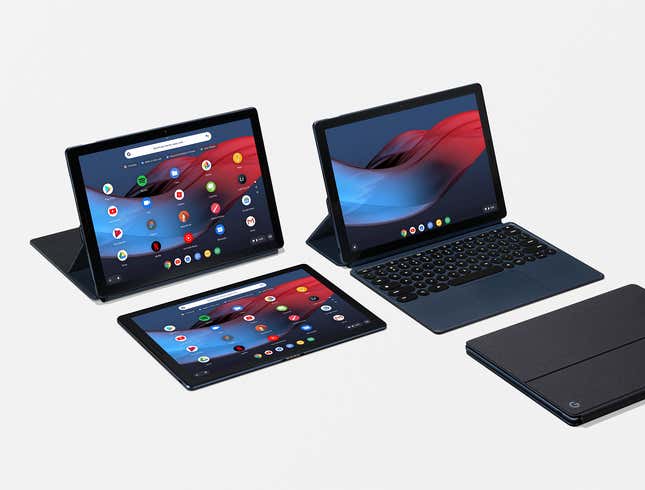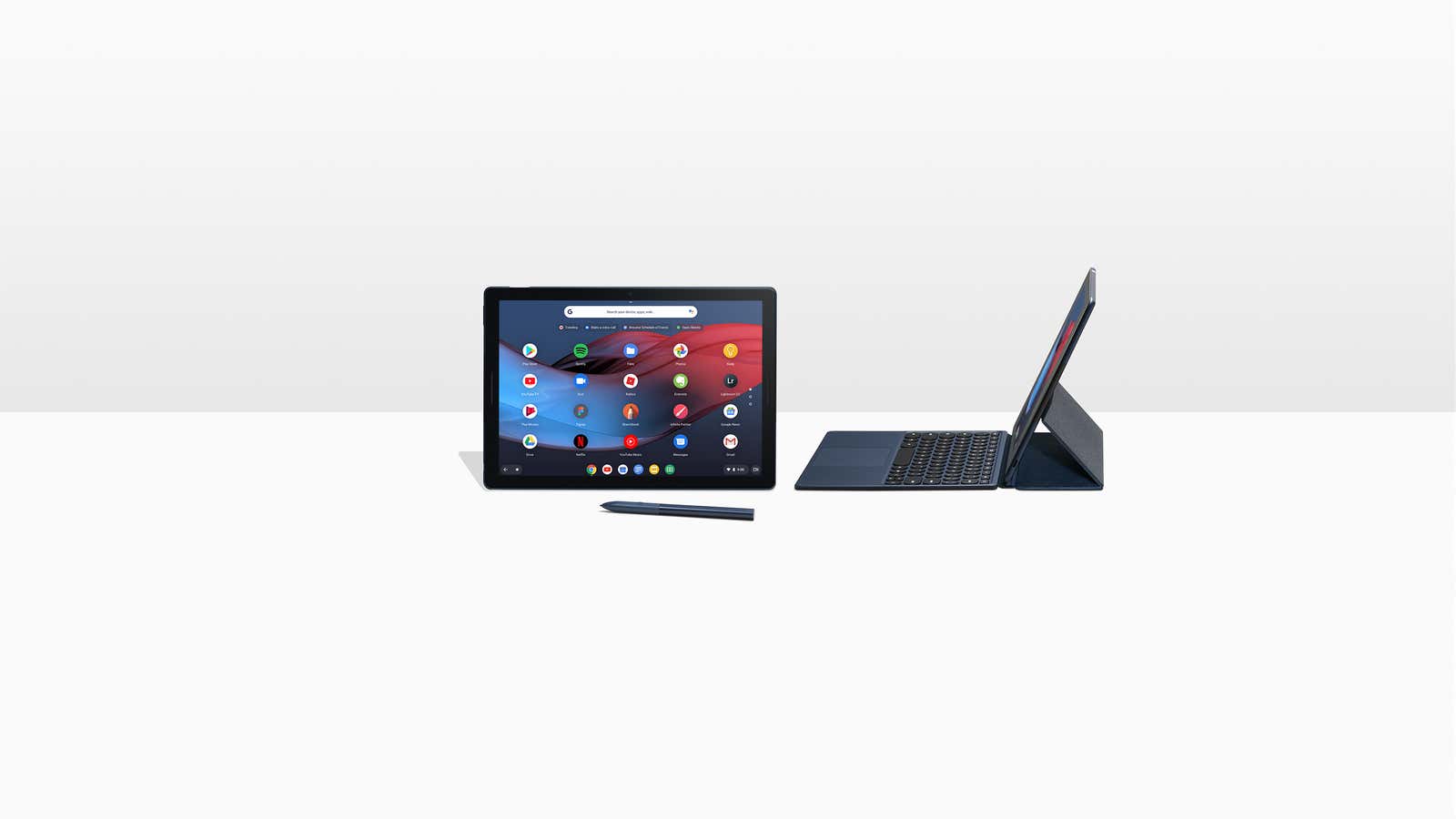Sometimes a device comes along that really changes the way you think about what you need in a computer.
Sadly, though, that’s not Google’s new tablet, the Pixel Slate. For me, that was Apple’s latest iPad Pro, which refined a design it’s been fiddling with for eight years, to the point I purchased one for myself and now use it as my travel computer. I haven’t looked back.
Google’s answer to the iPad Pro, and Microsoft’s Surface tablet line, doesn’t feel quite as well-considered as either device. It falls somewhere between Microsoft’s approach to tablets—which is to make them powerful but tactile mini computers—and Apple’s—which is to make them speedy, giant smartphones. The Pixel Slate acts like a Chromebook laptop when snapped into its keyboard case, and like a (sort of) tablet when it’s not.
I’ve been using the device on and off for the last few weeks, and here’s what I found:
What’s good
It has a trackpad. One of the most common complaints about the iPad Pro is that there’s no way to control it with a mouse. The Pixel Slate has an option.
You can tilt the screen. Another complaint levied at the iPad (and, to a lesser extent, the Surface) is that you can only tilt the screen to a couple angles. The Pixel Slate’s keyboard case uses magnets that can slide along the back of the tablet that allow the screen to be titled up or down at just about any angle you’d want.
Brilliant display. The Pixel Slate’s 12.3-inch display is super bright and sharp, and looks great whether you’re poking around the web, or watching a movie.
What’s not so good
The dangly keyboard. Google thought outside the box to get the Slate’s display to tilt so much. Microsoft’s Surfaces use a small kickstand on the back of the tablets—which have their own problems—whereas the Slate has the sliding magnetic back. That leaves the keyboard part of the case awkwardly dangling on a thin strip of pleather, which feels like it could easily break over time.
Closing the tablet is awkward. Beyond the sliding keyboard, closing the tablet is a slightly annoying experience: You either have to use two hands to push the folded back part of the case back, so that it’s flush with the tablet, and then drop it down onto the keyboard, or you drop it down first and then try to push the back part closed. If you do that part second, though, the strong magnets can force the tablet out of its case, causing you to have to reopen the case, reconnect the tablet, then close again.

And when you flip the keyboard back behind the device to turn it into an upright tablet, flipping the keyboard back around will take the back of the case with it (as they connect magnetically), and then the case invariably falls off of the tablet. I kept dropping the tablet when trying to match the positions in Google’s marketing images, prompting my colleague from the other side of my desk cluster to call out, “Is everything OK over there?”
The circular keys are weird and quiet. Google’s decision to make the keys on the Slate’s keyboard round is an odd one stylistically. It’s also a little unnerving to have no audible feedback when typing, given there’s barely any tactile feedback on the mushy keys either, leaving you feeling like you’re typing into a void.
It’s clunky. The Slate weighs about 0.6 pounds more than the iPad Pro, and the bezels around the edge of the display make the screen feel smaller than it is.
It’s costly. Google chose to follow Microsoft’s pricing model for the Slate. The base model starts at $599 (not including the $200 keyboard case), but the options for the most powerful versions (featuring Intel i5 and i7 processors) start at $999 and $1,599.
It has a weird double life. The Slate acts like a Chromebook when docked in the keyboard case, and a pseudo-Android tablet when not. In reality, all that really changes is that you can rearrange and resize app windows when it’s docked, whereas every app loads fullscreen when it’s in tablet mode. There’s also a desktop that seems to serve absolutely no purpose when the device is in laptop mode.
Should you get one?
I really can’t see a reason to pick up one of these. Even at the basest price, there are touchscreen Chromebook laptops that can do everything the Slate can (albeit likely in a chunkier package) that don’t feel nearly as awkward to use. And if you’re really in the market for a high-power tablet, Microsoft’s latest Surface Pro 6 does a better job of being a portable computer. And if you’re just in the market for a travel device, the iPad or iPad Pro are better at filling that niche.
